 The Sevso Plate * (27.8 inches in diameter) may also reference a hunting feast describe by the roman writer Philostratus. But the iconography is Christian. The Chi-Rho situated at the apex of the legend on the plate’s circumference is a symbol for Jesus Christ...
The Sevso Plate * (27.8 inches in diameter) may also reference a hunting feast describe by the roman writer Philostratus. But the iconography is Christian. The Chi-Rho situated at the apex of the legend on the plate’s circumference is a symbol for Jesus Christ...
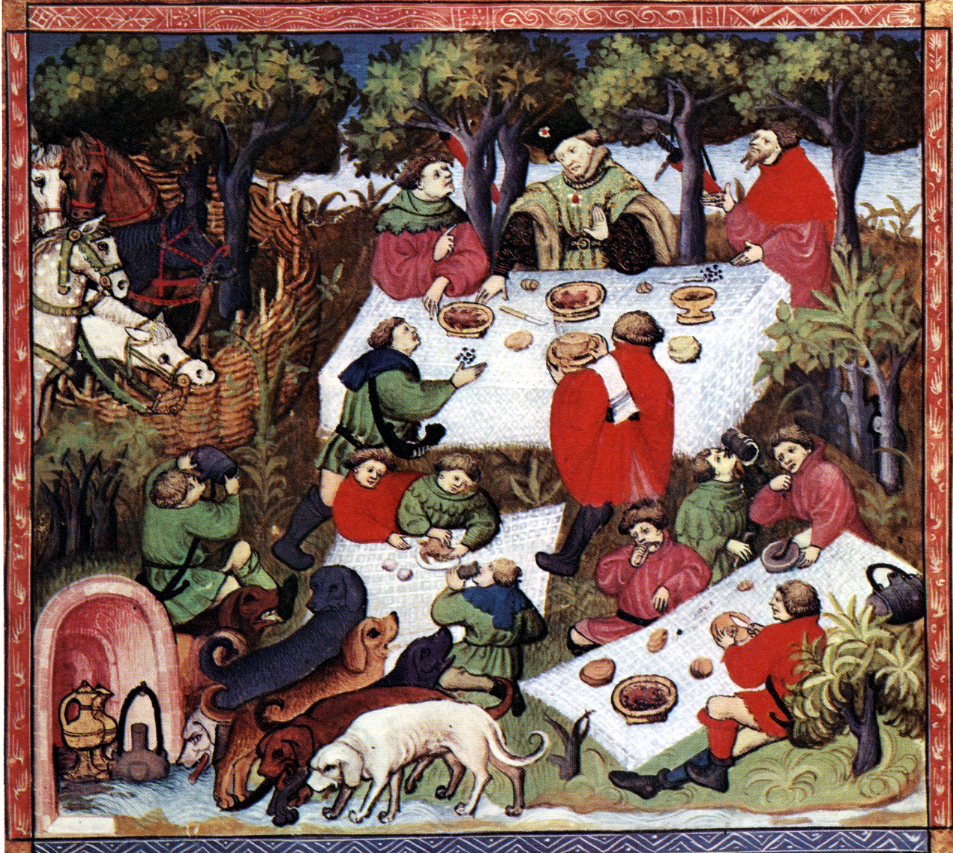 Gaston III’s The Book of Hunt formalized the hunter’s assemblée as the model for a meal during a hunt. It is not a picnic. Gaston did not intend this gathering as a luncheon but as an early morning meeting during which the day’s hunt was discussed...
Gaston III’s The Book of Hunt formalized the hunter’s assemblée as the model for a meal during a hunt. It is not a picnic. Gaston did not intend this gathering as a luncheon but as an early morning meeting during which the day’s hunt was discussed...
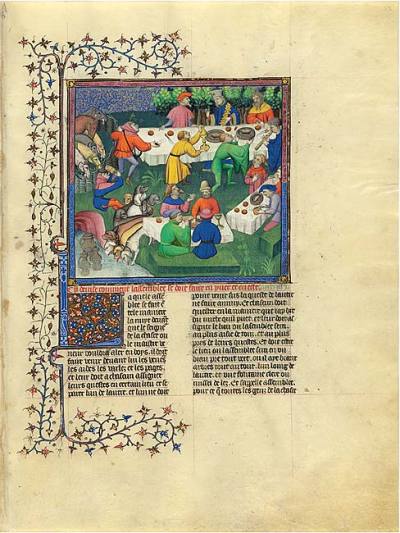 When Edward Langley, 2nd Duke of York, translated Gaston’s Le livre de chasse (1389) into English, French was still the language of the Court and elsewhere. He renamed it The Master of Game.* Like Chaucer, Edward’s translation decided to write in English...
When Edward Langley, 2nd Duke of York, translated Gaston’s Le livre de chasse (1389) into English, French was still the language of the Court and elsewhere. He renamed it The Master of Game.* Like Chaucer, Edward’s translation decided to write in English...
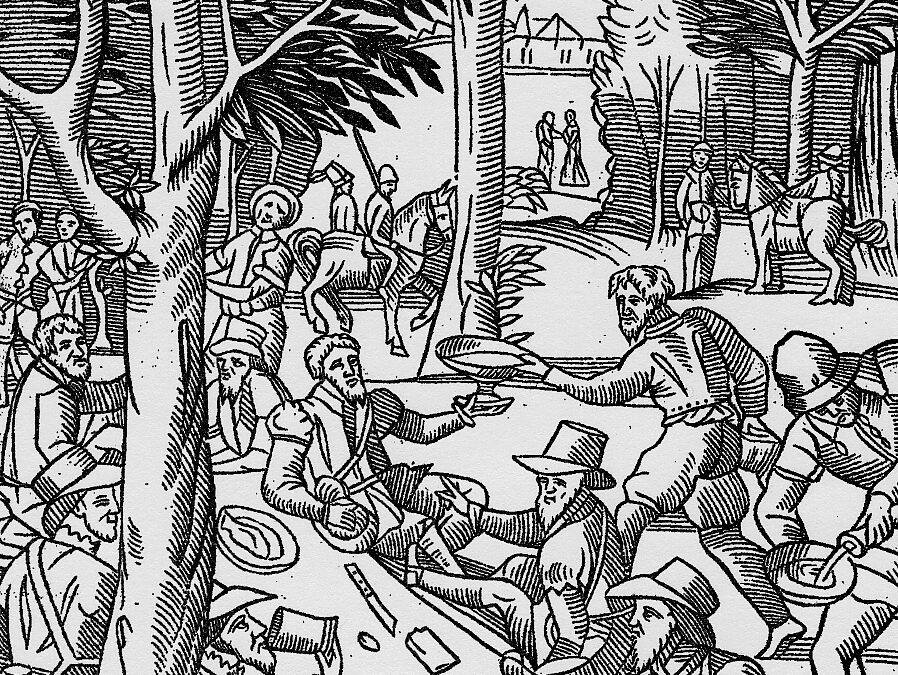 Fouilloux’s La Venerie, aka Hunting, differs from Gaston’s 1389 description (See Le livre de chasse). Accordingly, the assemblée is replaced with un repas chasse, a hunters’ lunch attended only by men. However, when George Gascoigne adapted La...
Fouilloux’s La Venerie, aka Hunting, differs from Gaston’s 1389 description (See Le livre de chasse). Accordingly, the assemblée is replaced with un repas chasse, a hunters’ lunch attended only by men. However, when George Gascoigne adapted La...
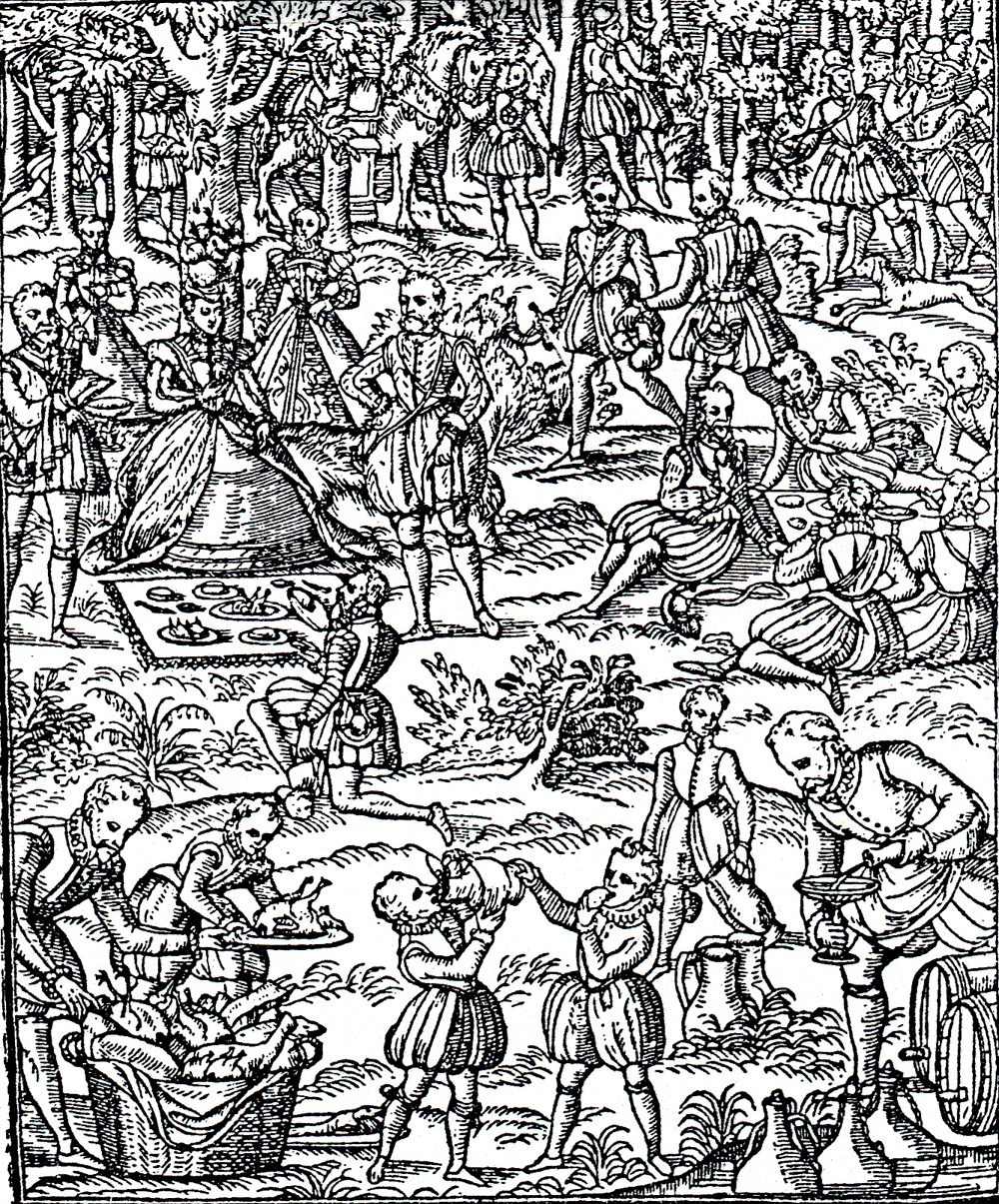 Gascoigne adapted Gaston Phébus’s The Book of the Hunt (1380) and Jacques du Fouilloux’s in La Venerie (1560) into English, retitling the work The Noble Arte of Venerie or Hunting (1575). (The book is dedicated to Lord Clinton, Elizabeth’s master of...
Gascoigne adapted Gaston Phébus’s The Book of the Hunt (1380) and Jacques du Fouilloux’s in La Venerie (1560) into English, retitling the work The Noble Arte of Venerie or Hunting (1575). (The book is dedicated to Lord Clinton, Elizabeth’s master of...
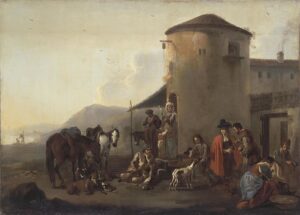 Miel’s halt on the hunt and repas de chasse depicts hunters stopped by a rustic inn. In the Prado’s La Merienda, hunters have spread a cloth beside their horses and are settling in to relax. This is a perfunctory meal of sliced ham, cheese, bread, and wine. Unlike...
Miel’s halt on the hunt and repas de chasse depicts hunters stopped by a rustic inn. In the Prado’s La Merienda, hunters have spread a cloth beside their horses and are settling in to relax. This is a perfunctory meal of sliced ham, cheese, bread, and wine. Unlike...
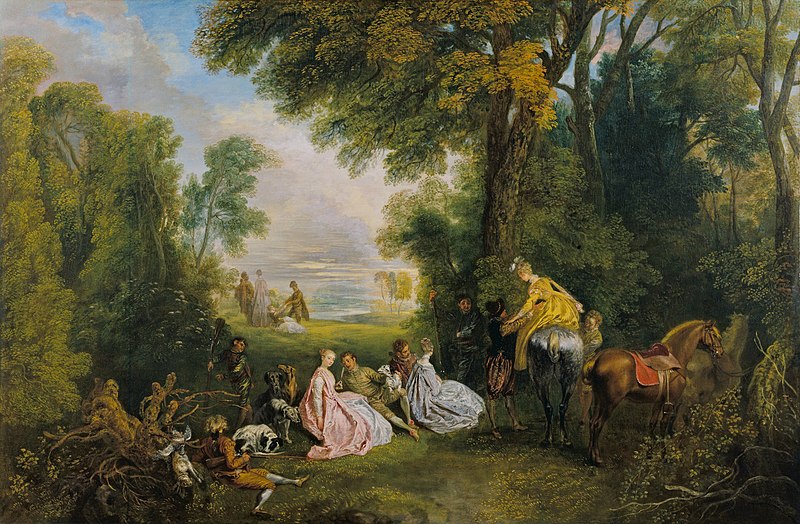 Watteau’s Rendez-vous de chasse illustrates a common activity among hunters, especially aristocrats who stopped about midday for a luncheon. The pause was called a tryst (a meeting at predetermined location), where their wives or mistresses met the hunters....
Watteau’s Rendez-vous de chasse illustrates a common activity among hunters, especially aristocrats who stopped about midday for a luncheon. The pause was called a tryst (a meeting at predetermined location), where their wives or mistresses met the hunters....
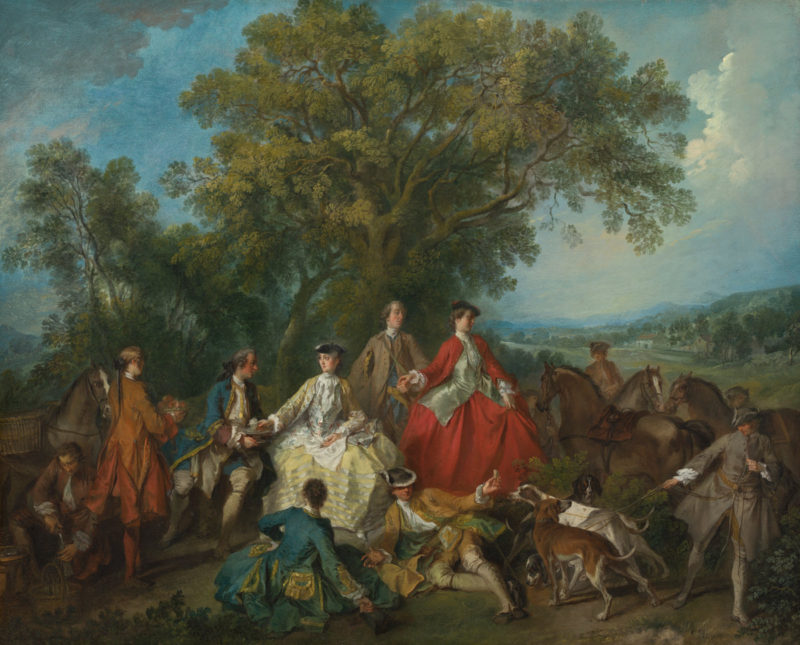 Because the scene is obviously a picnic, the National Gallery of Art’s title, The Picnic after the Hunt, is apt. But Lancret, whose language was French, would not have used pique-nique because it refers to an indoor dinner. More likely, he would have titled un repas...
Because the scene is obviously a picnic, the National Gallery of Art’s title, The Picnic after the Hunt, is apt. But Lancret, whose language was French, would not have used pique-nique because it refers to an indoor dinner. More likely, he would have titled un repas...
 As a passionate hunter, Brillat-Savarin enjoyed traditional midday luncheon trysts or haltes de chasse. he describes the gathering in “Meditation XV” in Physiologie du Gout, or The Psychology of Taste. According to French usage, the halte de chasse is not...
Exalting himself as a star hunter, “un homme libre,” or free man, Courbet painted himself in the center of Le Repas de chasse. Many luncheons, repas de chasse, were already painted by Watteau, Van Loo, De Troyes, and others, but their aristocratic...
As a passionate hunter, Brillat-Savarin enjoyed traditional midday luncheon trysts or haltes de chasse. he describes the gathering in “Meditation XV” in Physiologie du Gout, or The Psychology of Taste. According to French usage, the halte de chasse is not...
Exalting himself as a star hunter, “un homme libre,” or free man, Courbet painted himself in the center of Le Repas de chasse. Many luncheons, repas de chasse, were already painted by Watteau, Van Loo, De Troyes, and others, but their aristocratic...










